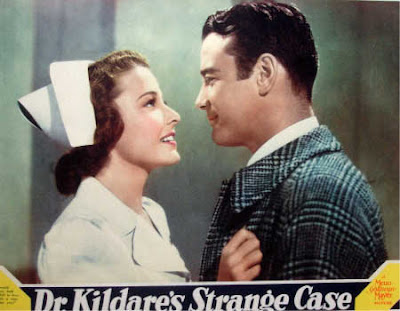Director: Alfred Santell
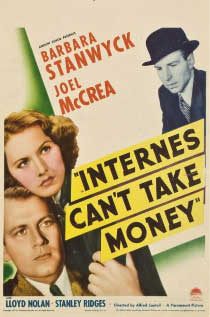
This film was the kickoff for the film series that came later of Doctor Kildare and then Doctor Gillespie and then the Doctor Kildare TV series. It is based on a story by Max Brand - more famous for his Westerns - but he was to write eight Kildare novels. This first one was produced by Paramount but they didn't follow up on it and MGM bought the rights for their series that ran from 1939 - 1942. When the series came about they, re-structured the Kildare story from being a surgeon to a diagnostician and added the character of Dr. Gillespie. And it begins with his going to the hospital on his first day.
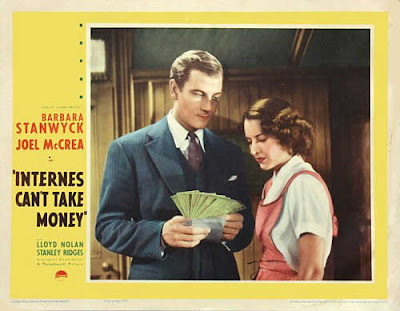
Here Kildare is already knee deep in work as an interne making $10 a month. In the series he gets a raise to $20! The film does a fine job of showing the doctors at work handling patients that walk in. One woman that Kildare gets is Janet Haley who has burnt her arms. He patches her up and is about to send her on her way when she faints from malnutrition. But for the most part the film skips over the doctor angle and it becomes a gritty gang film. And a fairly decent one. But what makes it work is the casting - Janet is Barbara Stanwyck, Kildare is Joel McCrea and the gang boss is Lloyd Nolan. McCrea had been around for a bunch of years but hadn't really hit it big yet - but Stanwyck insisted that he get the role. Good thinking. The chemistry between the two of them on film is almost hair-raising and they do nothing but stare into each other's eyes. Watching Stanwyck in close-up is a lesson in acting. And he is just so genial and charming. Sullivan's Travels and Foreign Correspondent were still a few years away for McCrea.
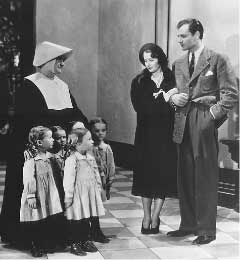
Kildare is in a bar nursing a drink when Nolan walks in and collapses from a knife wound. They won't take him to the hospital so Kildare operates on him there with the help of Janet who happened to be there. Kildare saves his life. Janet was there trying to convince a crook to tell her where her baby girl was. Her now dead husband had taken it from her and been killed in a bank robbery. She was sent up too. Now she wants her baby and no one will help her. It is a nice little drama with an edge to it and to some degree set the formula for the films to come which were a mix of doctoring and fixing people's problems.
Young Dr. Kildare (1938) – 6.0
Director: Harold Bucquet
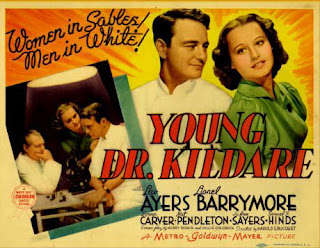
Dr. Kildare had a long shelf life that lasted over five decades in one form or another. It started with a series of books from Max Brand of all people. Brand is mainly famous for his many Westerns that he wrote. His first Kildare story was picked up by Paramount for the film Internes Can't Take Money with Joel McCrea, Barbra Stanwyck and Lloyd Nolan. The film did only so-so business at the Box Office and so MGM got the rights with a series in mind starring Lew Ayres as Kildare and Lionel Barrymore as Kildare's older mentor Dr. Gillespie. Ayres had hit it big in the film All Quiet on the Western Front in 1930 but the only big hit he had since then was marrying Ginger Rogers in 1934. And for Barrymore it was a Godsend as his character got to stay in a wheelchair for the series and his Dr. Gillespie series that followed. He had terrible arthritis in his legs and walking was painful.
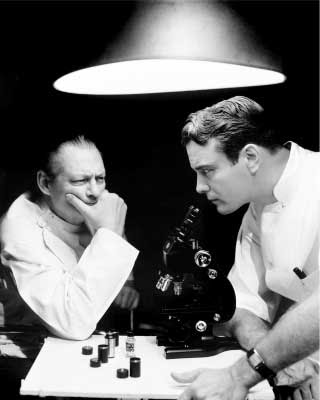
The series lasted for nine films till 1942 when Ayres was drafted and declared that he was a Conscientious Objector and that got so much negative blow back that the studio cut him loose. Shameful really considering that Ayres signed up to be a medic and was in the middle of action in the Pacific for three years - during which time Ginger Rogers divorced him - and he received three medals. I wonder what it was like when he attended the wounded and the man looked up and said aren't you Dr. Kildare? Dr. Kildare made a comeback in the 1960s with the TV series starring Richard Chamberlain for five seasons. In the 1970s there was another series but it only lasted a year. Ayres made a comeback as well doing a radio show based on the character along with Barrymore in the 1950s. He was offered a TV show in the 1950s and did two pilots but when the network would not agree to ban cigarette commercials, he quit.
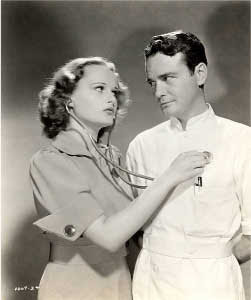
This is a fine introduction to the series. Nothing gangbusters but a low-key drama with a couple laughs provided by Nat Pendleton as the ambulance driver (he had the same role in the Dr. Gillespie series). Kildare has just graduated from medical school and goes to visit his parents in small-town America. His father (Samuel Hinds) expects him to join his practice and the girl (Lynne Carver) who loves him wants him to stay but he has other ideas and has an interne position waiting for him in NYC. Upon arriving he immediately clashes with Dr. Gillespie who is cranky, insulting and plain mean. Good practice for Mr. Potter in It's a Wonderful Life. He criticizes Kildare relentlessly but underneath the crank he realizes that Kildare has a gift and when Kildare gets in trouble and fired for refusing to divulge information given to him in confidence it is Gillespie who saves him. Monty Wooley makes an appearance as a psychiatrist and looks much thinner than he was a few years later. It is all boiler plate and predictable but MGM was the master of making these little films feel bigger.
Calling Dr. Kildare (1939) – 6.0
Director: Harold Bucquet
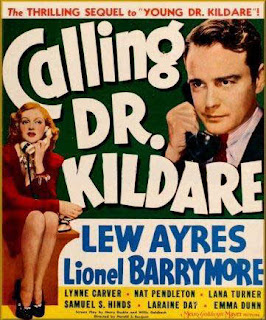
In this second film in the series Kildare is a bit of an idiot but then Lana Turner had a habit of making a lot of men act like idiots. She was still being tried out by MGM to see where she would fit. She had been in an Andy Hardy movie the year before - a series that tried out a number of future female stars. I am hoping that this Kildare series does the same. Turner is like a silk kitten who purrs when she gets close to a man. The men growl right back. She steals every scene she is in like a professional burglar. There isn't much doubt that she was going to be a star and she was within a few years. Much of the cast from the first film returns in this one. That is one of the positives of these series - you keep seeing the same actors in their roles and get attached to them - from his parents, the girl he left behind, the nurses, the ambulance driver, the bartender, the telephone operator and Gillespie of course - crankier than ever. Many of these actors continued when the Dr. Gillespie series started. The interesting thing here that was in the first film is that Gillespie is diagnosed with cancer and given a year to live. Clearly, that was a bad diagnosis! But perhaps they were planning to write him out but he became so popular that they never did.
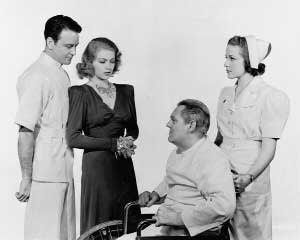
Another female actress is introduced - Laraine Day - and looking ahead I see she is in a number of the films. Which is great. She makes a very good impression here. Miss Perfect Profile was one of her nicknames. Never a star but she got tons of publicity in her life while married to Leo Durocher, the combative baseball manager. On their honeymoon they never left their room for three straight days and when Durocher finally did he said he was coming up for air and needed to rest.
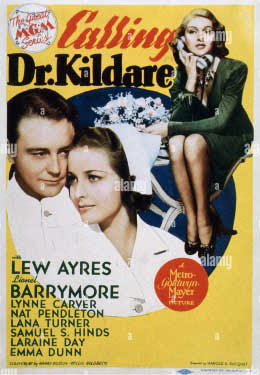
In this one Kildare once again gets on the wrong side of Gillespie and is demoted to working in a neighborhood clinic alongside Nurse Lamont (Day) who is actually Gillespie's spy. He gets called out to help a young man who was supposedly stabbed but actually shot. Doctors of course have to report any gunshot wound and he is about to until the man's sister walks in like a perfumed curve ball - all special effects - Lana Turner wearing a sable coat and a hat with what looks like a cactus on top. She whispers in his ear - please doctor can't you not report it. For me. He nearly melts. He digs himself in deeper when a murder seems related to the bullet wound - any sensible doctor would report it now - but Lana just says come up and see me sometime. These films are about 20% medical and the rest is taken up by some big drama and Gillespie trying to teach him life lessons.
The Secret of Dr. Kildare (1939) – 6.0
Director: Harold Bucquet
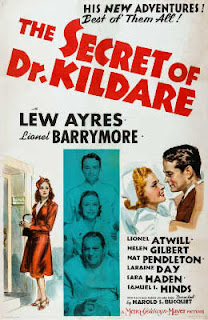
The good old days when doctors not only made house calls but pretended to be an old friend of the family in order to observe a woman who has been acting erratically. The fact that her father is the seventh wealthiest man in America of course had nothing to do with this special service. In the last film Dr. Gillespie (Lionel Barrymore) said that some day "healthcare will be a right". A little ahead of it's time. Damn commie Hollywood writers. All the same actors are back again with two new ones for this film - Sara Haden who was a regular in the Andy Hardy films as the aunt and Helen Gilbert who had gone through the Andy Hardy initiation the year before in Andy Hardy Gets Spring Fever in which she plays the hot teacher he falls for. MGM had big hopes for her but her personal life got in the way - in particular her fling with Howard Hughes. It seems that the Andy Hardy series and this one were a pair - both full of homespun bromides, happy endings, family, devotion to mother, prayer and the wise elders. Films like this worked back then. How we have changed.
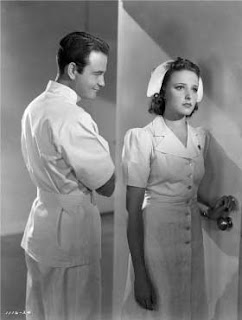
Gillespie and Kildare are working day and night on a more efficient cure for pneumonia and Gillespie is on the verge of exhaustion and his cancer has gotten worse. Lionel Atwill plays the wealthy father who is worried about his daughter (Gilbert) and says she refuses to see a doctor. So Kildare volunteers to be a friend of the father and visit them. Nurse Lamont (Larraine Day) isn't too thrilled with that as they have become an unofficial couple. A big kiss in the end seems to seal that. Kildare intentionally creates a rift with Gillespie and leaves - so that the old man can rest up for a few days. A bunch of nice sweet moments in this - with his parents, Gillespie rousting the nurses who all adore him, Day is lovely and in love and Kildare learns another life lesson that Gillespie hands out like candy at Halloween. Good support from Nat Pendleton as the ambulance driver and comic relief and George Reed, the black actor who pushes around Gillespie's wheelchair and makes funny remarks. No black doctors obviously but it is a nice role. He had been acting since 1920 when he was Jim in Huckleberry Finn and his final role was in 1947 - the Dr. Gillespie film Dark Delusion. Nearly 140 films - most of which he was uncredited of course.
Dr. Kildare’s Strange Case (1940) – 6.0
Director: Harold Bucquet
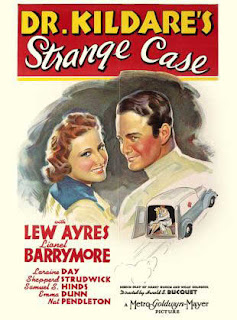
The whole cast is back in the fourth film in the series. And I learned something new in this one about medicine! By the end of this series I should be ready to intern. But for more than $20 a month which is what Kildare (Lew Ayres) gets. It is a problem because he is in love with nurse Mary Lamont (Laraine Day) but he doesn't feel he can marry her on that salary. And there is a new doctor in the house and Dr. Lane (Shepperd Strudwick) is rich and has eyes on her. Who wouldn't? Lane though is on an unlucky streak and his last few patients have died during surgery. He is losing his confidence like a relief pitcher who gets bombed a few times. But does our boy Kildare gloat? No, of course not. Instead, he puts his job on the line to help him. This is MGM. Fulsome and wholesome and apple pie. Kildare is the all American boy.
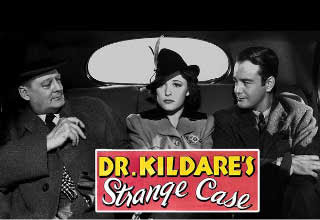
A few crises come about in this film. Because of saving a girl in a previous film, her father offers Kildare a job for $500 a month and a house to live in. If he accepts, he can marry Lamont; if not he is back to 18 hour days under the grouchy Dr. Gillespie (Lionel Barrymore), living in the intern dormitory and having no place to take Lamont for some old fashioned smooching. The big plot point is when a man with no identity comes in with a skull fracture and Dr. Lane has to decide on the spot whether to operate on him - he is losing his nerve but Kildare bucks him up with the old "you have life in one hand, death in the other" routine. But here is the interesting part. The operation seemingly goes fine but when the patient wakes up he rambles - and they immediately say his brain is dead. Hmmm. Geez give him time to get over the drugs. I remember the last time I was operated on and came out of it - two very pretty Thai nurses were asking me to breathe, breathe - what the hell, where am I. And can I date either one of you tonight.
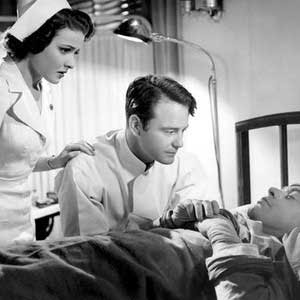
But the patient is in fact crazy and so Kildare in order to save Lane's job gives the patient an overdose of insulin. He tells Lamont, this will either kill him or save him. His brain basically re-formats and he goes back through evolution to find his real self and then comes back. It is called Insulin Shock Therapy and I figured this was movie nonsense but in fact there was such a thing that was used back in the 1930s and 40s on mental patients. It put them into a coma. But this was done over a period of weeks. This being a 75 minute film, Kildare does it over one night. Don't try this at home with your crazy relatives who still think the election was stolen.
